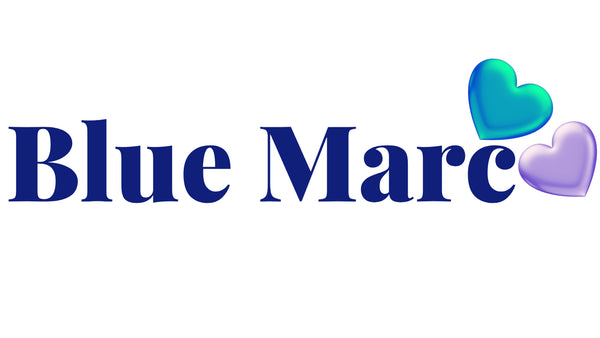
🗣️ Nurturing Speech Clarity in Children: A Guide for Parents
Share
✨ Introduction: Unlocking the Power of Clear Communication
As children grow, their ability to express themselves clearly is essential for their emotional, social, and academic development. However, some children may experience speech difficulties that hinder their communication journey. Recognizing early signs and offering the right support can make a profound difference. In this guide, we explore speech clarity milestones, practical tips for parents, technology aids, and when to seek professional help.
🧠 Recognizing Speech Difficulties in Children
Early detection is key. Look out for these signs:
- Limited Vocabulary: Struggling to find or use age-appropriate words.
- Articulation Problems: Difficulty pronouncing sounds or substituting sounds incorrectly.
- Stuttering: Repetitions, hesitations, or prolonged sounds when speaking.
- Poor Intelligibility: Difficulty being understood even by close family members.
- Language Delays: Slower development of phrases, sentences, or vocabulary compared to peers.
👪 How Parents Can Help
Create a Communication-Friendly Environment
- Listen actively and allow time for your child to finish their thoughts.
- Model good conversation habits without rushing or correcting too harshly.
Engage in Meaningful Conversations
- Talk about daily experiences, feelings, and interests.
- Ask open-ended questions to stimulate discussion.
Read Aloud Together
- Choose colorful, engaging books.
- Discuss the story, characters, and ask prediction questions.
Play Word and Sound Games
- Play “I Spy,” rhyming games, or naming objects around the house.
- Make learning language fun and interactive!
Pronunciation Practice
- Gently model correct pronunciations without criticism.
- Repeat mispronounced words correctly in a natural conversation flow.
Encourage Singing and Nursery Rhymes
- Songs and rhymes build rhythm, sound awareness, and articulation.
Limit Screen Time
- Prioritize real conversations and play over passive screen use.
Seek Professional Evaluation
- If concerned, consult a speech-language pathologist (SLP) for an evaluation and personalized advice.
Be Patient and Celebrate Progress
- Every child’s journey is unique. Celebrate every small improvement!
🧩 Understanding Speech Clarity Development
Key Milestones
- 18 months: Around 20 spoken words.
- 2 years: 200–300 words, starting two-word phrases.
- 3 years: Simple sentences; more understandable to strangers.
Articulation vs. Phonological Disorders
- Articulation Disorders: Difficulty producing specific sounds.
- Phonological Disorders: Consistent patterns of sound errors.
Typical Speech Sound Development
- Early sounds: p, b, m, n, t, d, h, w
- Later sounds: r, l, s, z, sh, ch, th, blends (e.g., "st", "tr")
🌎 Special Considerations
- Accents and Dialects: Natural variations—generally not disorders.
- Bilingual Children: Temporary delays or "code-mixing" are normal and expected.
- Oral Motor Skills: Weakness or coordination issues can affect articulation.
🎯 Importance of Early Intervention
- Early support = better long-term outcomes.
- An SLP can design individualized therapy plans.
- Early action reduces frustration and boosts confidence.
🤝 Social Impact of Speech Difficulties
- Children with unclear speech may struggle socially.
- Enhancing speech clarity improves self-esteem and peer relationships.
🧏 Speech Clarity and Hearing Impairments
- Hearing loss can impact pronunciation and clarity.
- Early diagnosis, assistive devices, and therapy can make a big difference.
🛡 Building Confidence Through Positive Reinforcement
- Celebrate small successes daily.
- Focus on effort, not perfection.
- Praise practice and persistence to foster a growth mindset.
🧍 Individual Differences Matter
- Every child's communication timeline is unique.
- Avoid constant comparisons with peers or siblings.
- Recognize and respect your child's personal pace.
💬 Non-Verbal Communication Skills
- Gestures, facial expressions, and body language support communication.
- Acknowledge and encourage non-speech forms of expression.
🛠️ Exploring Therapy Options
- Articulation Therapy: Focuses on producing individual sounds accurately.
- Phonological Therapy: Corrects patterns of sound errors.
- Augmentative and Alternative Communication (AAC): Picture boards, apps, or sign language to support children with more severe impairments.
📱 Using Technology to Support Speech Clarity
Speech Apps and Games
- Interactive exercises for articulation and language development.
Educational Videos and E-Books
- Exposure to varied vocabulary and sentence structures.
Virtual Speech Therapy
- Online sessions with licensed therapists offer flexibility and access.
Music and Singing Apps
- Encourage rhythmic patterns and phonological awareness.
Parent-SLP Collaboration
- Speech therapists can recommend customized tech tools and strategies.
🎯 Tip: Technology should enhance—not replace—face-to-face communication.
🌟 Conclusion: Empowering Your Child’s Voice
As a parent, you are your child’s first and most powerful communication partner.
By creating a supportive environment, modeling positive speech habits, integrating learning into daily life, and seeking professional help when needed, you can nurture your child's speech clarity and boost their confidence.
Every word, sound, and sentence is a step toward their bright future—walk it with patience, joy, and unwavering support!
